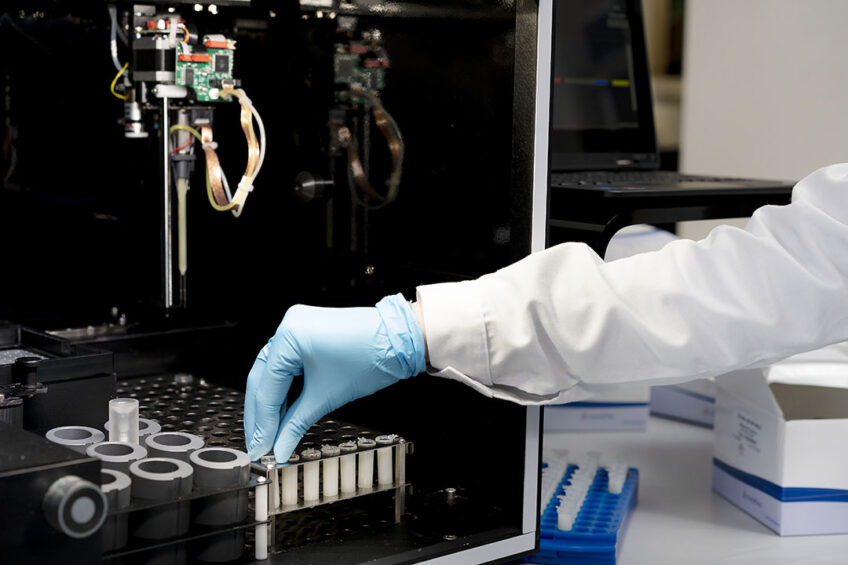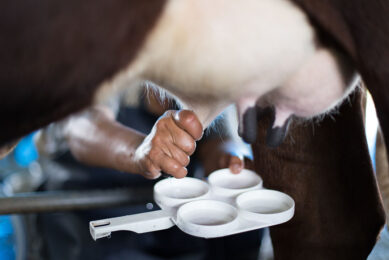Evolution of immunoassays to a reliable screening method

Giulia Rosar from Eurofins Tecna provides a brief overview of the development of rapid screening technologies, explaining how Eurofins got from the first models to solvent-free automated methods and gives tips on how to make the best product choice for different testing needs.
Enzyme-Linked ImmunoSorbent Assays (ELISAs) first became popular in mycotoxin screening in the late 1970s, and for 30 years they have been used widely, particularly among large grain processing plants, service laboratories and feed producers. The lack of clean-up procedure, ease of use, capacity to process parallel samples, time-to-result and the overall cost balance were incentive enough to compensate for some performance bias, matrix effects and non-selective detection of mycotoxins metabolite.
Since the 2000s, several first-level screening rapid methods were released and improved: Lateral Flow ImmunoAssays (LFIAs), also named immunochromatographic assays or immune-gold colloid immunoassays, have been particularly popular the food industry because of the speed and suitability for running onsite, rapid, easy screening on incoming goods. This technology responded well to the introduction of regulatory limits for mycotoxins in foodstuffs, especially for those companies not already equipped with an ELISA laboratory. Over the years, the typical solvent extraction was replaced with methanol-free and ethanol-free aqueous solutions. The time-to-result has been shortened and precision improved.
On the other hand, the trend among service laboratories is to shift away from ELISAs and towards instrumental analysis, as investment has generally decreased in the past years and sample purification has become easier.
So, more than 50 years since its debut, what is the current role of ELISAs in mycotoxin analysis and how has this technology evolved?
Eurofins Tecna has worked in this field since the early 2000s and now offers more than 20 different mycotoxin screening products. The goal is to tailor different solutions to different needs within the food and feed industries in terms of quality, speed, safety, reproducibility, and price.
Multiple options for different mycotoxin testing needs
The most cost-efficient solution available is the B ZERO line, a master-curve calibrated portfolio of kits developed to screen a wide range of mycotoxins. The physical calibration removal is supported by the robustness of the reagents. Within each experiment, it is necessary to run the zero standard and samples, dedicating one well per determination. Analyses become significantly cheaper if a few samples are run in the same session, and the cost of calibrators is not amortised. Companies performing several verifications for multiple toxins can benefit from shared sample preparation for mycotoxins in cereals, including DON, and use the same extract for several kits. In addition, when it comes to aflatoxin M1 research in milk, it is worth noting that no sample manipulation is required, as bovine, goat and sheep milk can be run directly in the assay with their natural fat content.
For milk screening, I’screen AFLA M1 and I’screen AFLA M1 milk are widely used in the dairy industry, service laboratories and official control bodies in the Mediterranean Area. The kits show a high correlation to HPLC and very high precision, selectivity and robustness, together with the fact that milk is analysed either through a quick centrifugation step (as per the ISO 14675 guideline) or directly with its natural fat content. Moreover, time-to-result is very low; up to 40 samples run in little more than one hour. I’screen AFLA M1 milk has been granted AOAC Research Institute Performance Tested Methods status (AOAC Cert. No. 072002) for use with raw bovine whole milk, skimmed and powdered milk.
Alongside the B ZERO and I’screen line, the Celer test kits are available for detecting a broad range of mycotoxins, and come with five standards, single-well implementation, and an assay time of 15-20 minutes. The line is characterised by a shared sample preparation in water-methanol for all mycotoxins in cereals. As an alternative, H2AFLA and H2DON are solvent-free, fast analytical solutions for total aflatoxins and deoxynivalenol respectively (Table 1).
Automation to improve lab efficiency
Automated ELISA processing saves significant work time in the laboratory and delivers accurate results, which is especially important during high-volume periods. Eurofins Tecna strives to provide industries with fully automated methods for ELISAs implementation. Most kits are validated for the Bolt, a compact, flexible, easy-to-use, walk-away automatic analyser from sister company Gold Standard Diagnostics. The Bolt supports all the ELISA processing steps in a fully walk-away mode, releasing an automatic report, supported by several curve algorithms. The strict validation protocol eliminates all potential errors.
Field application teams can install a Bolt unit and get the analysis started in around three hours, with no need for onsite method adjustment or validation.
Automatised processes are an advantage for low-to-medium analytical volumes, especially for mix-and-match sessions, as the instrument can autonomously run up to four compatible methods of the same line in one frame, without mismatching reagents or getting stuck in multiple parallel sessions. The same robot can potentially analyse any kind of ELISAs for different targets and is already validated for the analysis of antibiotic residues in foods of animal origin, food pathogens, allergens, and glyphosate.






